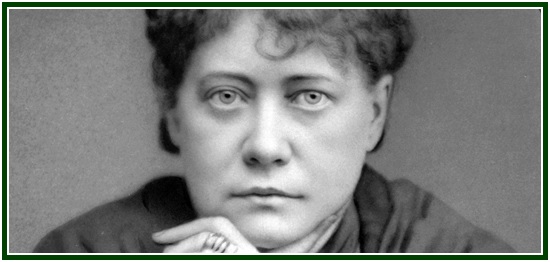
The Bridge to An Infinite Bliss Can
Be Found in the Cycle of 24 Hours
Carlos Cardoso Aveline

“It is not possible to live each day correctly,
except by looking at it as if it were the last.”
Musonius Rufus (28?-100? AD) [1]
“There is nothing like one day after the other”, says a proverb. And there isn’t, indeed.
One can have more information, or less, on the art of living and the road to wisdom. Such information may be reliable or not. In any case, the great battle one has to face is the single battle of each new day in life.
The struggle for right action is simultaneously physical, emotional and mental. One must establish better habits. It is necessary to reduce or eliminate wrong patterns of vibration. By preparing himself through correct actions, proper thoughts and noble motives, an individual purifies his instrument – the lower self – and gets gradually rid of unnecessary illusion and pain. Thus he attains an inner, not outer, peace. Human suffering will be his to the end. He will learn to be bigger than pain.
One single and long-term effort, made from the right point of view, sets everything in life in place; but for this to happen, one-pointedness and a broad mental horizon are equally necessary. The point and the circle are one. Concentration, and a wide vision, must occur together, even if equilibrium between both is at first precarious. An open mind is absolutely necessary to see, to discern, and to decide what is it that must be the enduring center of one’s lifetime. Once we know that the effort is made in the right direction, each day’s work is one more – and decisive – victory.
Concentration is different from ambition and stubbornness, for these two feelings are blind, and concentration is not.
A lasting, natural and almost effortless concentration emerges from sincerely renouncing to that which is philosophically unimportant.
But concentration also depends on seeing the significance of each minute in life. If we have a clear and noble goal, we know that each second counts. An hour is like an eternity. There are aeons in a week. And, on the other hand, an entire lifetime is but a passing moment.
Time is elastic, therefore, and not mechanical. Each cycle of 24 hours contains a whole manvantara and a pralaya. It is a basic unit, a brick of time, with which we must make a good karmic building, the whole present incarnation, and then present it – at its end – to its rightful owner, our own Higher Self and spiritual soul.
“As above, so below”, says the hermetic tradition.
The whole is present in each of its parts. Just as every atom is a miniature of our solar system, each day contains the seed and substance of all eternity.
The literature of theosophy aims at serving as a tool for students to build correct 24 hours cycles of life – one after the other – until the artificial separation between “Present Moment” and “Eternity” dissolves in one’s mind as a piece of ice under the sunlight.
The practical perception of one’s life as a passing bubble in the boundless anonymous oceans of Space and Eternity is a daily challenge.
And this is not all.
Each 24 hours of our physical existence is itself a bubble in the same oceans; and a most sacred and valuable one, we should add, for the bubble contains the oceans.
Thus, old Pythagorean questions have a decisive importance at the end of each day’s effort. They include these ones:
1) How have I lived today?
2) What have I done right?
3) What were my mistakes? How will I correct them tomorrow?
4) Do I have a clear and correct model of what should be a day in my life?
5) How am I following such a model and discharging my duty?
A day in life must be made as much as possible complete in itself, just as any work of art should. It must have symmetry and equilibrium between sound and silence, action and perception, aspiration – and renunciation.
Marcus Aurelius Antoninus, the Roman emperor and philosopher, wrote in his Meditations:
“The perfection of moral character consists in this, in passing each day as the last, and in being neither violently excited nor torpid nor playing the hypocrite.” [2]
In another occasion that Stoic thinker said to himself:
“Every moment think steadily as a Roman and a man to do what thou hast in hand with perfect and simple dignity, and feeling of affection, and freedom, and justice; and to give thyself relief from all other thoughts. And thou wilt give thyself relief, if thou doest every act of thy life as if it were the last, laying aside all carelessness and passionate aversion from the commands of reason, and all hypocrisy, and self-love, and discontent with the portion which has been given to thee.” [3]
NOTES:
[1] “Tabla de Cebes, Disertaciones y Fragmentos Menores de Musonio Rufo, Manual y Fragmentos de Epicteto”, Biblioteca Clásica Gredos, 207, Editorial Gredos, Madrid, 1995, 250 pp., see p. 149.
[2] “Meditations”, by Marcus Aurelius, in the volume “Lucretius, Epictetus, Marcus Aurelius”, Encyclopaedia Britannica, Inc., 1952, 310 pp., see p. 284, paragraph 69, book VII.
[3] “Meditations”, by Marcus Aurelius, Encyclopaedia Britannica, Inc., book II, paragraph 5.
000
In September 2016, after a careful analysis of the state of the esoteric movement worldwide, a group of students decided to form the Independent Lodge of Theosophists, whose priorities include the building of a better future in the different dimensions of life.
000
E-Theosophy e-group offers a regular study of the classic, intercultural theosophy taught by Helena P. Blavatsky (photo).

Those who want to join E-Theosophy e-group at YahooGroups can do that by visiting https://groups.yahoo.com/neo/groups/E-Theosophy/info.
000